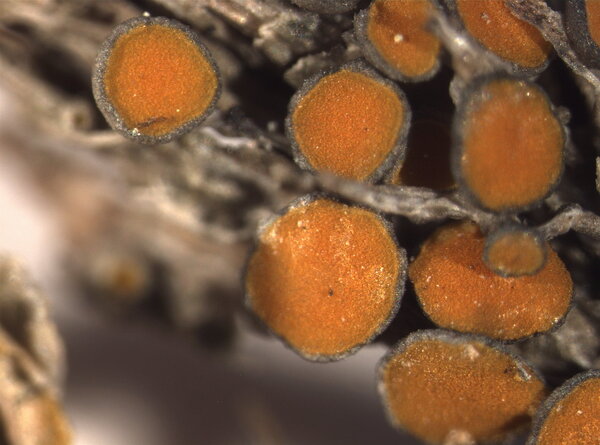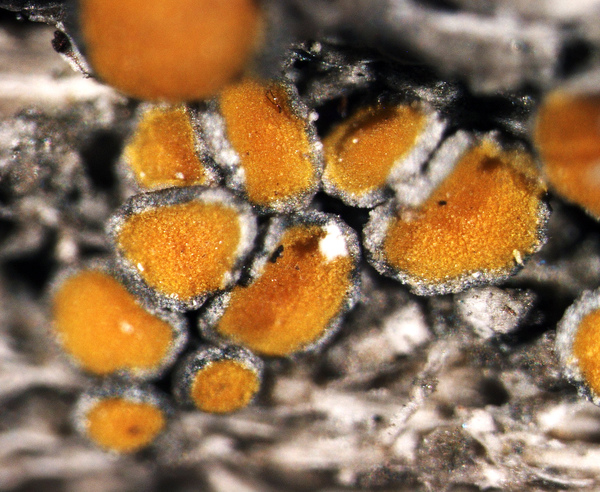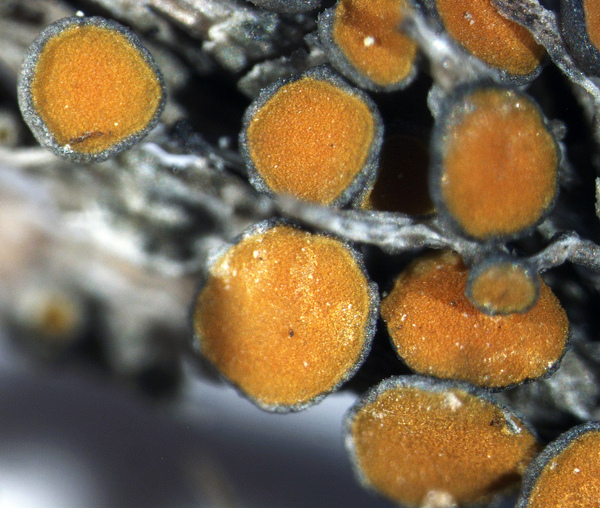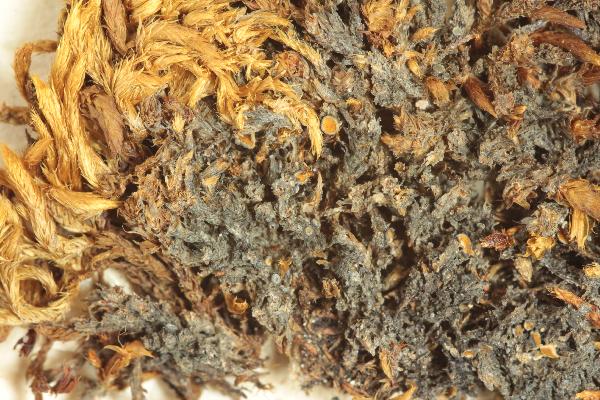Caloplaca stillicidiorum (Vahl) Lynge var. muscorum (A. Massal.)
Provisionally placed here, ICN Art. 36.1b.. Basionym: Callopisma cerinum var. muscorum A. Massal. - Symmicta Lich.: 35, 1855.
Synonyms: Caloplaca cerina var. muscorum (A. Massal.) Jatta; Caloplaca muscorum (A. Massal.) M. Choisy & Werner
Distribution: N - Frl (Tretiach & Hafellner 2000, Hafellner & al. 2008), Ven (Lazzarin 2000b, Nascimbene & Caniglia 2003c), TAA (Nascimbene & al. 2006, Nascimbene 2008b, Hafellner & al. 2012), Lomb (Valcuvia & al. 2003, Dalle Vedove & al. 2004, Ertz & al. 2015), Piem (Morisi & Sereno 1995, Morisi 2005, Matteucci & al. 2013), VA (Piervittori & Isocrono 1999, Valcuvia 2000, Piervittori & al. 2004), Emil (Fariselli & al. 2020), Lig (TSB 33470). C - Tosc (Benesperi 2007, Benesperi & al. 2007), Marc (Nimis & Tretiach 1999), Umb (Genovesi & al. 2002, Ravera & al. 2006), Abr (Nimis & Tretiach 1999, Di Nuzzo & al. 2021, Vallese & al. 2022), Sar. S - Camp (Aprile & al. 2002, 2003b), Bas (Puntillo & al. 2012), Cal (Puntillo 1996), Si (Caniglia & Grillo 2003, Campisi & al. 2020).
Description: Thallus crustose, lead grey to grey, thin to rather thick, more or less continuous or formed by small lobules. Apothecia frequent, lecanorine, rounded, sessile, strongly constricted to almost substipitate, 0.5-1.7 mm across, with a bright orange-red to brown-orange, concave to mostly flat, pruinose or epruinose disc, a poorly evident, somewhat paler proper margin, and a thick, pale to dark grey, sometimes white-pruinose, entire thalline margin. Epithecium orange-brown, K+ purple-red; hymenium colourless, 70-80 μm high; paraphyses branched in upper part, the apical cells 3-6 μm thick; hypothecium colourless. Asci 8-spored, clavate, functionally unitunicate, apically thickened with a broad internal beak, the inner part of apex and external cap I+ blue, Teloschistes-type. Ascospores 2-celled, polarilocular, hyaline, ellipsoid, 11-15(-19) x (4-)6-8(-11) μm, the equatorial thickening (“septum”) 4-7 μm. Photobiont chlorococcoid. Spot tests: thallus K- or K+ faintly violet (best visible in thick sections under the microscope), C- or C+ violet, KC-, P-; disc of apothecia K+ purple-red. Chemistry: thallus with the Sedifolia-grey pigment; disc of apothecia with parietin (major), fallacinal, emodin, teloschistin and parietinic acid (minor). Note: here I place populations growing on mosses and plant debris, below the subalpine belt and mostly in dry-continental areas, on basic siliceous substrata, with intensely orange apothecial discs. They represent an heterogeneous assemblage of ecotypes whose taxonomy has not been clarified yet (Šoun & al. 2011). See also note on the previous entry.
Growth form: Crustose
Substrata: soil, terricolous mosses, and plant debris
Photobiont: green algae other than Trentepohlia
Reproductive strategy: mainly sexual
Subcontinental: restricted to areas with a dry-subcontinental climate (e.g. dry Alpine valleys, parts of Mediterranean Italy)
Commonnes-rarity: (info)
Alpine belt: absent
Subalpine belt: extremely rare
Oromediterranean belt: absent
Montane belt: extremely rare
Submediterranean belt: very rare
Padanian area: absent
Humid submediterranean belt: extremely rare
Humid mediterranean belt: very rare
Dry mediterranean belt: rare

Predictive model
Herbarium samples
Growth form: Crustose
Substrata: soil, terricolous mosses, and plant debris
Photobiont: green algae other than Trentepohlia
Reproductive strategy: mainly sexual
Subcontinental: restricted to areas with a dry-subcontinental climate (e.g. dry Alpine valleys, parts of Mediterranean Italy)
Commonnes-rarity: (info)
Alpine belt: absent
Subalpine belt: extremely rare
Oromediterranean belt: absent
Montane belt: extremely rare
Submediterranean belt: very rare
Padanian area: absent
Humid submediterranean belt: extremely rare
Humid mediterranean belt: very rare
Dry mediterranean belt: rare

Predictive model
| Herbarium samples |
 DOLICHENS
DOLICHENS








